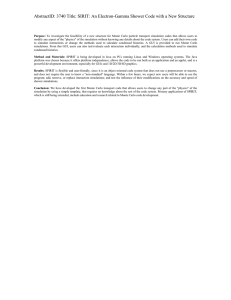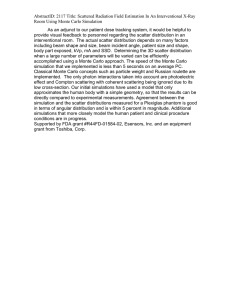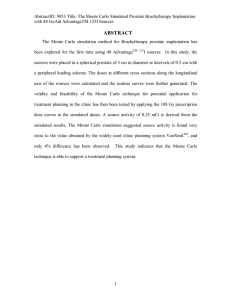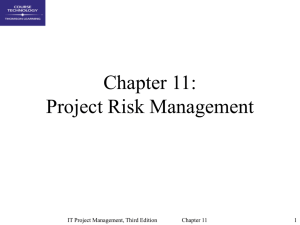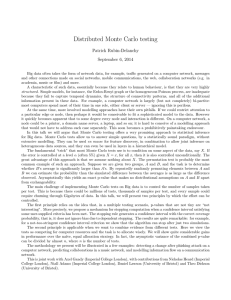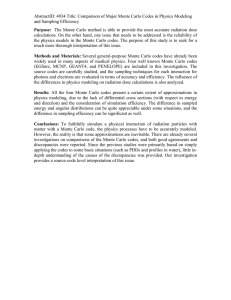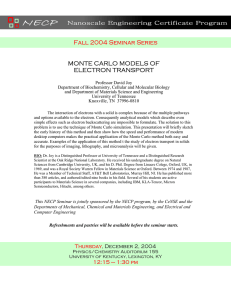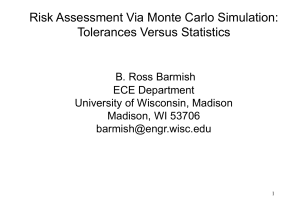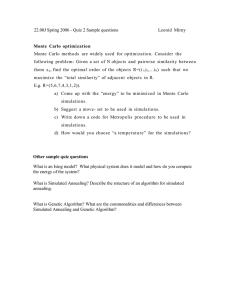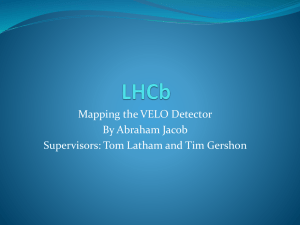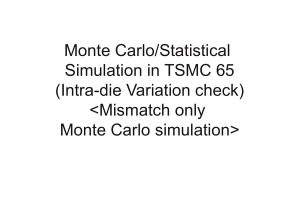Widad Maqbool AL-Abduwani
advertisement
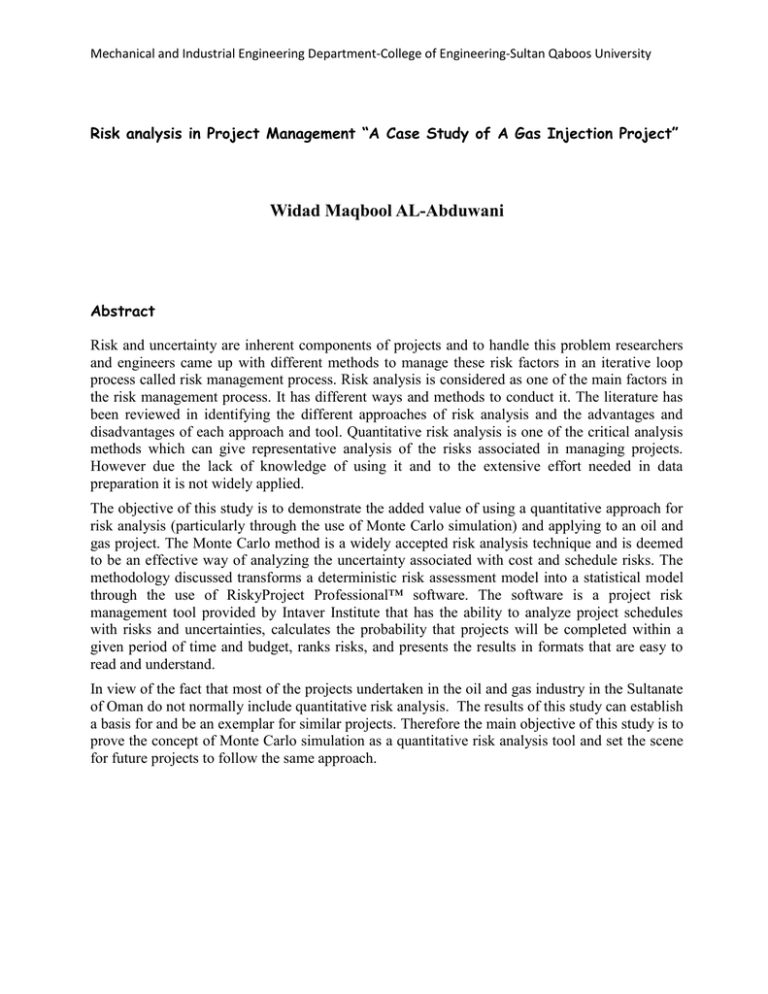
Mechanical and Industrial Engineering Department-College of Engineering-Sultan Qaboos University Risk analysis in Project Management “A Case Study of A Gas Injection Project” Widad Maqbool AL-Abduwani Abstract Risk and uncertainty are inherent components of projects and to handle this problem researchers and engineers came up with different methods to manage these risk factors in an iterative loop process called risk management process. Risk analysis is considered as one of the main factors in the risk management process. It has different ways and methods to conduct it. The literature has been reviewed in identifying the different approaches of risk analysis and the advantages and disadvantages of each approach and tool. Quantitative risk analysis is one of the critical analysis methods which can give representative analysis of the risks associated in managing projects. However due the lack of knowledge of using it and to the extensive effort needed in data preparation it is not widely applied. The objective of this study is to demonstrate the added value of using a quantitative approach for risk analysis (particularly through the use of Monte Carlo simulation) and applying to an oil and gas project. The Monte Carlo method is a widely accepted risk analysis technique and is deemed to be an effective way of analyzing the uncertainty associated with cost and schedule risks. The methodology discussed transforms a deterministic risk assessment model into a statistical model through the use of RiskyProject Professional™ software. The software is a project risk management tool provided by Intaver Institute that has the ability to analyze project schedules with risks and uncertainties, calculates the probability that projects will be completed within a given period of time and budget, ranks risks, and presents the results in formats that are easy to read and understand. In view of the fact that most of the projects undertaken in the oil and gas industry in the Sultanate of Oman do not normally include quantitative risk analysis. The results of this study can establish a basis for and be an exemplar for similar projects. Therefore the main objective of this study is to prove the concept of Monte Carlo simulation as a quantitative risk analysis tool and set the scene for future projects to follow the same approach.



